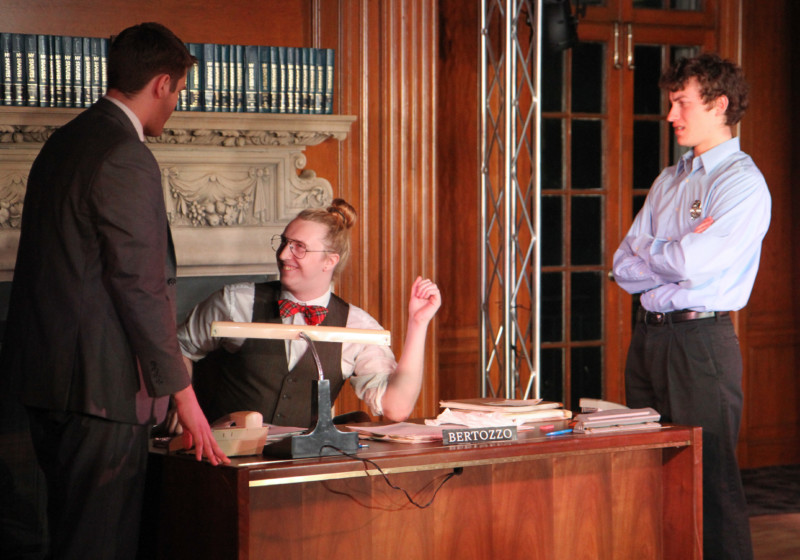Shrouded in mystery and drama, The Opposite of People’s most recent production takes viewers through unexpected twists and turns to solve the accidental death of an anarchist.
Aptly named, “The Accidental Death of an Anarchist” is loosely based on real-life events surrounding Italian anarchist Giuseppe Pinelli.
The play mainly focuses on the events that follow Pinelli’s “accidental” fall from the fourth floor of a police building.
Somewhere between musical theater and comedy, the group’s recent performance of the show combined brilliant acting, tasteful comedic scenes, and unique audience interactions to immerse the audience in the soul of the play.
Despite the darkness of the play’s material, perfectly placed comedy scenes lightened up the story and captivated the audience’s’ attention.
For instance, viewers bursted into laughter as Maniac, a psychotic swindler, dramatically tossed important documents out the window and blew raspberries into the phone.
The play touches upon more serious topics such as suicide, murder, and corruption, but it was scenes like this that gave the show a more interesting dynamic.
Instead of a bland, flat plot line, the story was given a heartbeat. There were moments of tension where the audience waited with baited breath, and moments of pure comedy, such as when Maniac and Maria Feletti, a journalist, had a casual conversation while an intense chase occurs at the same time.
The play’s true selling point was the actors themselves. The visible passion that the actors had put into their characters was what brought them to life.
Maniac’s uncontrollable laughter and the High Inspector’s over-the-top temper were just two of the many examples in which the actors gave their characters a special flair.
Freshman Michael Wizorek, who played Bertozzo, painted a flawless image of a high-strung foolish inspector. At the same time, former student Brenn Whiting, who played Maniac, effortlessly switched between the many given roles.
Unlike some plays, the characters in “The Accidental Death of an Anarchist” step out of their own world and interact with the audience.
While some might think this pulls the audience back into reality and breaks the hold that the play has on viewers, it actually resulted in the complete opposite. The breaks in the plot allowed the audience to fall even deeper into the play’s immersion.
At the very end of the play, Maniac addressed the audience and presented the two choices that Feletti has. There were two possible endings that come with either decision. This allowed the audience to feel as if they are part of the story and that they themselves were characters in the play.
“The Accidental Death of an Anarchist” was a play like no other, not just in the sense of the plot but also in the way it captivated the audience. It had its minor flaws, but its success came from its ability to use a mix of humor and mystery explain that our choices in the present can affect the future.


